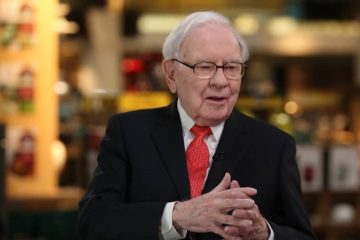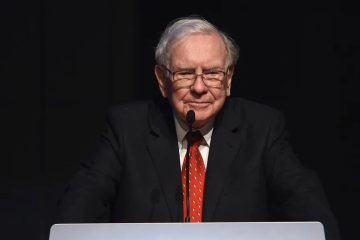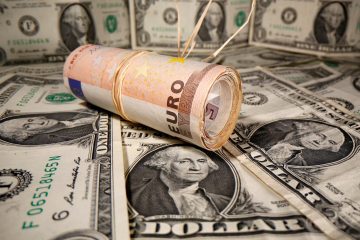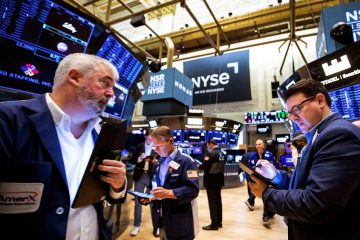Why I Am Buying Apple Now
Always feels good to get the first stock purchase of the month in, doesn’t it?
Every dollar working on my behalf means I’ll have to work that much less in the future. And since money doesn’t sleep, get tired, or get sick – unlike me – I’d rather my money work for me rather than the other way around.
As I recently discussed in my last watch list article, there are a few specific stocks that I’ll likely be focusing my capital on over the course of March. And this first purchase just happened to be on that list.
I purchased 5 shares of Apple Inc. (AAPL) on 4/7/15 for $ 127.02 per share.
Overview
Apple Inc. primarily designs, manufactures, and markets a variety of mobile communication and media devices, personal computers, and digital music players, in addition to selling related software, services, peripherals, networking solutions, and third-party digital content.
Some of their product offerings include the iPhone, iPad, Mac, iPod, Apple TV, and the Apple Watch. Their software solutions include the iOS, OS X operating systems, and the company offers cloud service via iCloud.
Net sales by operating segment were as follows for fiscal year 2014: Americas, 36%; Europe, 22%; Greater China, 16%; Retail, 12%; Japan, 8%; and Rest of Asia Pacific, 6%.
Net sales by product type for FY 2014 were: iPhone, 56%; iPad, 17%; Mac, 13%; iTunes, Software and Services, 10%; Accessories, 3%; and iPod, 1%.
Apple is currently the world’s largest publicly traded company by market capitalization.
Fundamentals
As you might expect before even reading this article, the company has excellent quantitative fundamentals.
I’m going to review the last 10 years of growth across the top and bottom lines, which will give us an idea of the long-term picture here. But I’ll also show what the more recent numbers look like as well to see how much Apple might be slowing down as it’s now a $ 700+ billion company.
Revenue was $ 13.931 billion in fiscal year 2005. The company grew that to $ 182.795 billion in FY 2014. That’s a compound annual growth rate of 33.11% over the last ten years, which is phenomenal. However, the last five years of data might be more representative of what to expect moving forward due to the maturity of the company and the markets it serves. The five-year CAGR for revenue is still a mighty impressive 29.39%.
EPS grew from $ 0.22 to $ 6.45 over the last decade, which is a CAGR of 45.55%. Again, stunning. The five-year CAGR is also impressive, at 31.45%.
Apple’s bottom line was helped recently by extensive share repurchases. The company announced a $ 10 billion buyback in 2012 that was subsequently increased to $ 60 billion in April 2013, then again to $ 90 billion in April 2014. Since 2012, the outstanding share count has been reduced approximately 7.5% from ~6.6 billion to ~6.1 billion.
These numbers can’t persist forever, and more recent growth over just the last couple fiscal years has slowed markedly. However, upper-single-digit or low-double-digit EPS growth seems extremely reasonable. S&P Capital IQ is actually predicting that EPS will grow at a 12% compound annual rate over the next three years, which assumes continued aggressive share buybacks.
Now, as a pretty hardcore dividend growth investor, one of my primary concerns is whether or not a company pays a dividend, the size of the payout, how much and how often they increase that dividend, and whether or not the dividend is sustainable.
In these terms, Apple passes with mostly flying colors.
My one issue with the stock is the length of the dividend growth streak. They’ve increased their dividend every year since initiating a dividend back in 2012. Steve Jobs, the co-founder and former CEO, was staunchly opposed to paying a dividend, which is why the company didn’t pay one until after his death in 2011. So I’m giving Apple the benefit of the doubt here.
Since they started paying a dividend in 2012, however, they’ve increased it significantly. The company increased the dividend by 15.1% in 2013 and 7.9% in 2014. In addition, they’re due up for another dividend raise later this month. So I’m very excited to see what that’ll be.
The yield right now, at just 1.5%, is low. However, they maintain a payout ratio of just25.3%and there’s that aforementioned upcoming dividend raise which could quickly boost the yield.
One area of Apple’s strength is its incredible balance sheet. The long-term debt equity ratio is very low, at 0.26. And it was until FY 2013 that they had any long-term debt at all, after deciding to fund some of the buyback and dividend activities with cheap debt due to a large portion of its cash behind held overseas. The interest coverage ratio is well above100, so there are no concerns here.
Notably, Apple’s total cash, cash equivalents, and marketable securities adds up to over $ 150 billion. For perspective, that means their cash hoard is about 50% larger than the entire market cap of McDonald’s Corporation (MCD)!
Profitability across the board is also spectacular – the company’s posted net margin that’s averaged 23.08% over the last five years and return on equity that’s averaged 37.16%. These numbers compare very well not only against the industry, but all businesses in general. Moreover, both have been noticeably improving over the course of the last decade.
Qualitative Aspects
Apple has been an absolute dominant company over the last decade with the launching of a number of high-quality products that people love to buy, like the iPhone and iPad. And Apple focuses on a number of areas that the competition historically hasn’t nailed down quite right, namely design and ease of use. The design of their hardware, software, and even points of sale (both retail stores and the website) have all set the standard by which other products and companies are judged.
This creates a sense of goodwill which translates into the incredible ecosystem that Apple has built. When you buy an iPhone, you’re not just buying a smartphone. You’re buying a piece of hardware that’s integrated with Apple’s software – this integration and standard familiarization across the product line, by the way, allows the company to charge a premium for their products. And that entire package – hardware and software – is designed to work best within the ecosystem that Apple offers, which includes third-party applications that number well over 1 million.
And that goodwill translates into repeat customers both in terms of buying the same product again, but also in terms of buying more products that offer the same user experience and quality. Notably, Apple maintains by far the highest customer loyalty percentages among smartphone manufactures, with an 87% loyalty rate in US and Europe.
Meanwhile, Apple still has tremendous growth potential yet ahead – especially in regards to iPhone sales – which is perhaps surprising for a company of their size. And since the iPhone is by far the company’s most important product, that is where much of the opportunity still lies.
First, the share of smartphones as a percentage of total handsets will surely grow over the next decade. Thus, the company has a great chance at grabbing a significant portion of these new customers.
Second, the company has an opportunity to grow its market share. Though its two largest operating segments – Americas and Europe – are mature markets, they have huge opportunities in front of them in emerging markets. And recent data shows they grew their market share in China to an all-time high of 27.6%. Looking at the global market, Apple has a 19.7% worldwide market share of smartphones, which leaves an incredible amount of room for growth.
Third, they have a massive cash pile which can be used opportunistically for major acquisitions or bolt-ons (which the company seems to prefer).
Fourth, they have the ability to harness the power of their ecosystem via new products. The Apple Watch is a great example of this.
Risks
AAPL is, of course, not without risks. I’ll highlight a few.
Primarily, the company faces intense competition across its entire spectrum of product lines, especially in the smartphone and tablet space.
In addition, Apple’s products are typically sold at a premium to their competitors. This leads to the high margins quoted above, but it could hurt them in emerging markets where price is a major factor.
Meanwhile, the tech space changes quickly. If the company isn’t able to keep pace and offer the best tech with the best experience, it could harm their ability to not only sell products, but also the ability to continue selling at a premium.
Lastly, they face currency risks like any other international company.
Valuation
The stock trades hands for a P/E ratio of 16.92, which is about 10% higher than the five-year average of 15.4. However, this is still much lower than the broader market, and we are talking about a high-quality company here.
I valued shares using a two-stage dividend discount model analysis with a 10% discount rate. I used an initial dividend growth rate of 15% for years 1-10 and a terminal dividend growth rate of 7%. This seems reasonable considering the low payout ratio, flexible balance sheet, and strong underlying profit growth. The DDM analysis gives me a fair value of $ 128.79.
It appears I picked up shares right at about fair value, which I’m okay with. I’ve never been opposed to buying a high-quality company at fair value, though I prefer to buy as cheap as possible, when possible.
Conclusion
This is a massive company. Surprisingly, however, I actually think there are still growth opportunities, especially in emerging markets like China. Growing market share there bodes well. Meanwhile, the company has an excellent brand image that focuses on design, quality, ease of use, an ecosystem that stretches across the spectrum of products, and a premium experience. Customers are obviously willing to pay up for that based on the margins, pricing, and loyalty numbers.
I’ve long been hesitant to invest in the tech sector. However, my portfolio as a whole is quite large, and my exposure to tech is still quite low (even after this purchase). That’ll likely remain so. Perhaps most importantly, though, is that I view Apple as just as much a consumer products company as a tech company. All companies nowadays have a significant amount of exposure to tech in some fashion. Though I don’t have an interest in investing in technology companies that fall outside my circle of competence, Apple’s core product lineup is fairly simple to understand in terms of what they offer, how they make money, and why that ability to make money will likely persist.
I don’t think the stock is a steal here, but it does appear to be roughly fairly valued. However, an upcoming dividend hike and the anticipated launch of the Apple Watch could be a catalyst to move shares higher, meaning this might be an opportunity.
As a final note, I had a remaining free trade with my brokerage, so there was no commission here. That’s why the purchase was as small as it is. It also gives me a chance to initiate a position and scale in. Meanwhile, I still have plenty of capital leftover for purchases elsewhere this month.
This purchase adds $ 9.40 to my annual dividend income, based on the current $ 0.47 quarterly dividend.
I’m going to include current valuation opinions from other analysts below, which I use to concentrate my reasonable valuation estimate:
Morningstar rates AAPL as a 3/5 star value, with a fair value estimate of $ 120.00.
S&P Capital IQ rates AAPL as a 3/5 star Hold, with a fair value calculation of $ 156.40.
I’ll update my Freedom Fund in early April to reflect this recent purchase.
Full Disclosure: Long AAPL and MCD.
What do you think of AAPL here? Like its prospects? What do you think of the fundamentals?
Thanks for reading.









